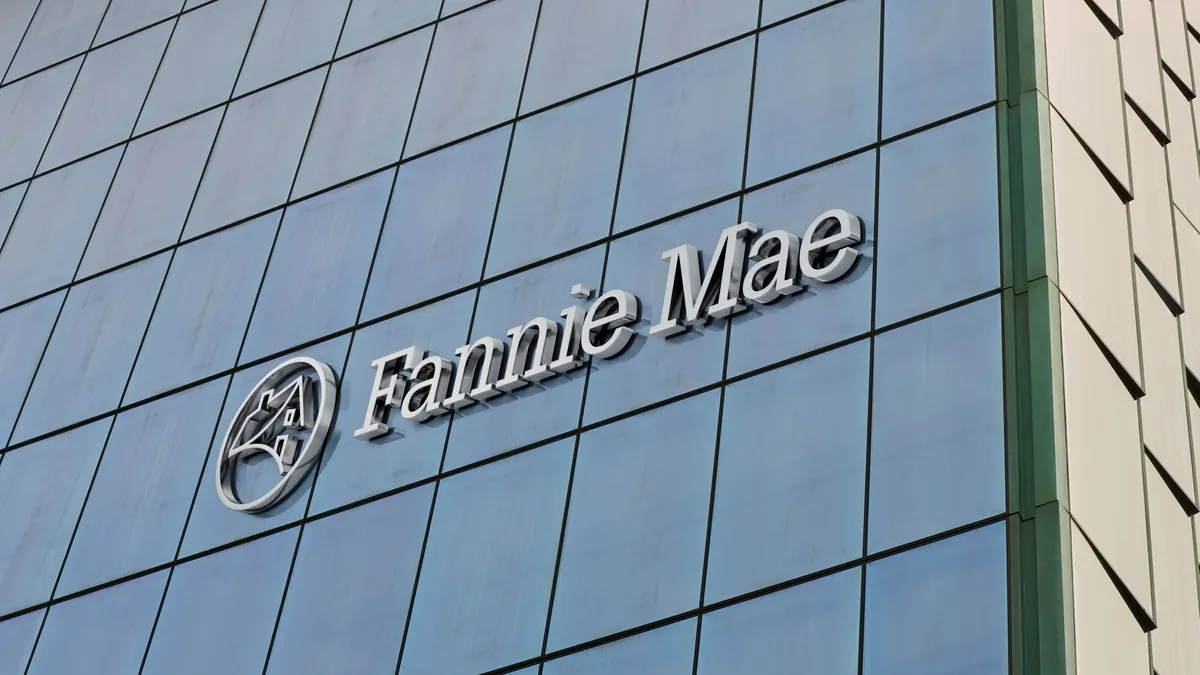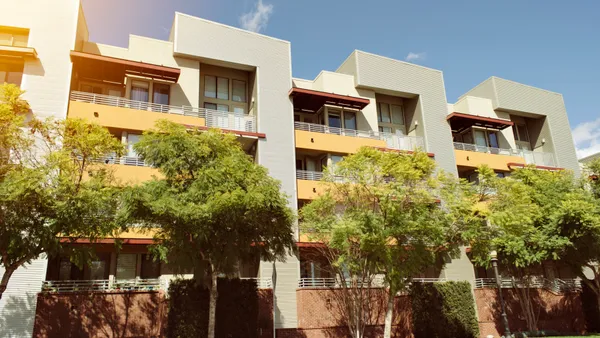Dive Brief:
- The Federal Housing Finance Agency has established lending caps of $73 billion each for Fannie Mae and Freddie Mac, allowing them to purchase a total of up to $146 billion in multifamily loans in 2025.
- FHFA’s new caps are a 4% increase above the $70 billion the agency allotted for each government-sponsored enterprise in 2024. In 2023, they were given $75 billion each.
- Even as the caps have been raised, questions surround the future of Fannie Mae and Freddie Mac. During Donald Trump’s first presidency, plans were made to privatize the agencies before COVID-19 hit in 2020, according to The Washington Post, which reported that the new Trump administration could try again to remove the GSEs from government control.
Dive Insight:
Similar to 2024, apartment loans that finance workforce housing will be excluded from next year’s limits. FHFA will continue to require that at least 50% of the GSE’s multifamily businesses be mission-driven.
In the release announcing the caps, FHFA Director Sandra L. Thompson said the caps show the GSE’s commitment to providing liquidity to make renting a home affordable.
“Additionally, the ongoing workforce housing exemption will continue to enhance the enterprises’ ability to support properties that preserve affordable rents, including properties preserved or created through corporate-sponsored affordable housing initiatives,” Thompson said.
FHFA will continue to monitor the multifamily mortgage market and maintain the ability to raise the caps further if necessary. However, if the actual size of next year’s market is determined to be smaller than was initially projected, the caps will not be lowered.
Spencer Gray, CEO of Indianapolis-based apartment owner and operator Gray Capital, wasn’t surprised by the expansion of the loan caps, pointing out that the federal government, through HUD, has made other moves, such as lowering debt service coverage ratio requirements for certain types of loans, to add liquidity to the housing market.
“They're seeing a lack of investment into housing, especially over the last year-plus,” Gray said. “And even though we're seeing a record amount of supply coming online today, it's pretty easy to see [it falling off] in the next year or two, and they're trying to get ahead of it.”
Gray also sees more loans hitting maturity in 2025, which will force more sales. “Owners right now, especially early next year, are going to have to make a decision, and a lot of that's going to have to be dispositions,” he said. “So I think the GSEs are trying to get ahead of it, making sure they've got plenty of ammunition so there's liquidity in the market for housing.”
Bob Broeksmit, president and CEO of Washington, D.C.,-based real estate finance trade group the Mortgage Bankers Association, is supportive of the continued cap exemptions for loans that support workforce housing.
“The 4% increase in the multifamily loan purchase caps to $73 billion for each GSE is appropriate, given the slightly improved market conditions and lending activity that’s expected next year due to the slow decline in interest rates,” Broeksmit said in a statement. “The cap levels should ensure that the GSEs are a viable option for lenders that finance properties that serve lower-income households and those living in rural areas.”
Click here to sign up to receive multifamily and apartment news like this article in your inbox every weekday.











